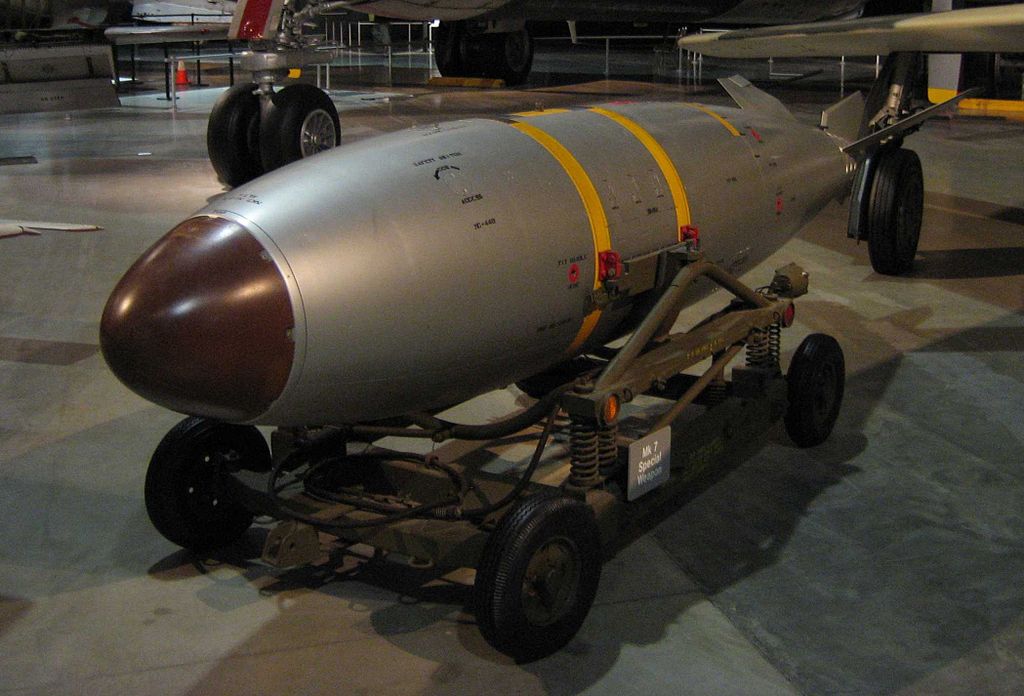The United States’ decision to spend $1 trillion to modernize its nuclear arsenal risks setting off another nuclear arms race according to numerous experts.
Nuclear weapons are scary
As a product of the 70s, I was genuinely convinced that my life would end in a Soviet missile strike until I reached my teens. To be completely honest, it wasn’t so much the threat of an Inter-Continental Ballistic Missile (ICBM) strike that terrified me as much as the Soviet Union’s leader having his finger on a button that could destroy the United States. At age four, I felt it odd that we would allow the Soviet Union to bury nuclear weapons in the United States so that all that a Soviet leader would need to is push a button to erase me from the planet.
Okay, I was young. But I was still frightened and the ABC network produced “The Day After” did me no favors either. That was nothing short of terrifying and with over 100 million viewers, to date the most watched debut of a television movie. I certainly wasn’t the only one that was truly frightened. It didn’t help that as a ten-year old in 1983, I was forbade from watching it with my parents and banished to my room where they clearly forgot I had a small (black and white) television. I guess in ABC’s defense it did clear up that whole “finger on the button” misunderstanding while scaring me out of my mind.
I briefly felt better in 1986 when I was lucky enough to attend the Reykjavík Summit in Iceland (long story) but that feeling lasted about as long as it took for the summit to collapse nearly as soon as it began.
Now I don’t really think about nuclear war but have been tasked to write about the potential for an upcoming nuclear arms race.
New START treaty could have unintended consequences
In 2010, then-Russian President Dmitry Medvedev (don’t feel bad for forgetting about him given Putin’s shadow) and President Barack Obama signed the New START treaty which committed both nations to reducing their nuclear stockpiles to 1,550 deployed warheads for each country by the 2018. I suppose I should be happier about this but that is enough of an arsenal to blow up the world over and over again and that doesn’t include the other nations in possession of nuclear weapons.
At the time of the treaty’s signing, Russia had an estimated 2,600 deployed warheads with the United States “lagging” behind with “only” 2,000 according to the Arms Control Association.
But with this cut in nuclear warheads comes a cost, and a significant one at that. A number of the United States’ nukes are being dismantled while others are simply being stored to change their status to “non-deployed.” Others still are receiving a costly “life extension program” like the B61-12 “gravity bomb” which is terrifically over-budget at $8 to $10 billion when approved at $1 to $2 billion.
“Apart from the stratospheric price, the most controversial element of the B61 upgrade is the replacement of the existing rigid tail with one that has moving fins that will make the bomb smarter and allow it to be guided more accurately to a target,” Julian Borger wrote in The Guardian earlier this month.
The arms race continues
In October, an Air Force F-15E fighter dropped a B61-12 in the deserts of New Mexico with alarming accuracy. While this could lead to bombs with lesser yields owing to this new found accuracy, it could also lead to problems.
While smaller bombs would, in theory, benefit Moscow, numerous experts believe that the deployment of these more accurate weapons in Europe could give Russia an excuse for military maneuvers around Poland and the former Baltic states of Lithuania, Estonia, and Latvia all of whom are NATO members.
“Moscow has predictably classified work on the new modification as a threat and an arms race,” Nikolai Sokov, a senior fellow at the James Martin Center for Nonproliferation Studies, told Tech Insider in an email recently.
Russia will match U.S. nuclear-conventional deployment
“The future, I believe, looks pretty gloomy. I see modern conventional weapons used in Russian policy toward NATO as an overt or a covert threat,” Sokov said.
“We are looking at a combined nuclear-conventional arms race in Europe in the near future,” Sokov concluded in is email to Tech Insider, “which will likely continue for an extended period of time.”
Rokas Masiulis, Lithuania‘s energy minister, agreed with this when speaking to the The New York Times recently. “They keep up constant pressure just to show they have influence,” he said adding, “It is all part of the general atmosphere of provocation and rising tensions in the region.”




